The northern English city of Newcastle is an exciting mix of new and old. The remains of the old castle that gave the city its name and the preserved parts of the medieval city wall are the most striking examples from history. Modern museums, well-stocked shopping malls and innovative architecture are also part of Newcastle.
Along the Tyne River there are several majestic bridges, and along the landscaped river promenade you can see some of these masterpieces from the industrial age, that added to Newcastle and northern England fame. In the same area, you can see some of England’s most spectacular buildings from recent decades.
Newcastle is close to the Scottish border, and from ancient times the impressive edifice, Hadrian’s Wall, winds its way through the countryside west of Newcastle towards the city of Carlisle. The North Sea with maritime activities at the mouth of the Tyne, churches, monasteries and beautiful nature are some of the many other things you can experience around Newcastle.
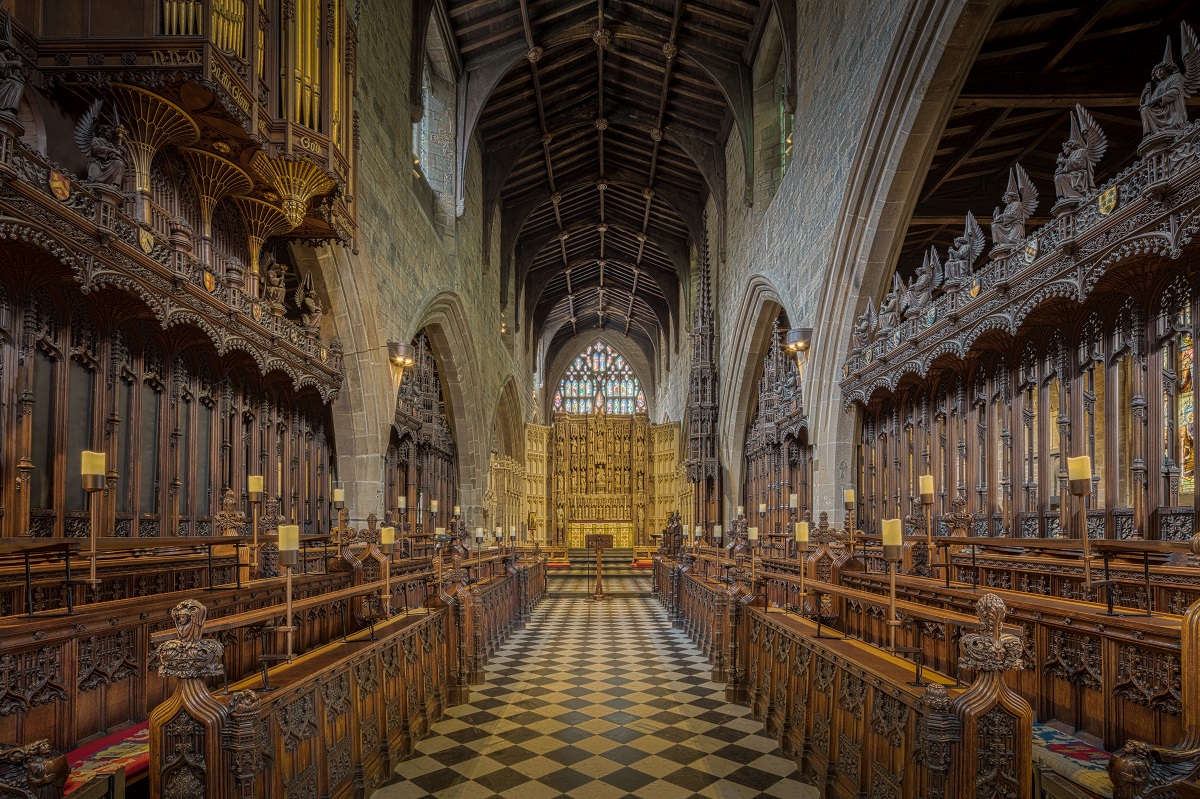
This is Newcastle’s Anglican Cathedral and thus the seat of the diocese’s bishop. The first church was built in 1091, but it was destroyed by a fire in 1216. The current one was built in the 14th century and offers a beautiful church interior with an impressive choir.
Newcastle was named after the castle that Wilhelm the Conqueror’s son, Robert Curthose, founded in 1080. On the site, the Romans had once built a fort. Today, Castle Keep is the only thing left of the castle.
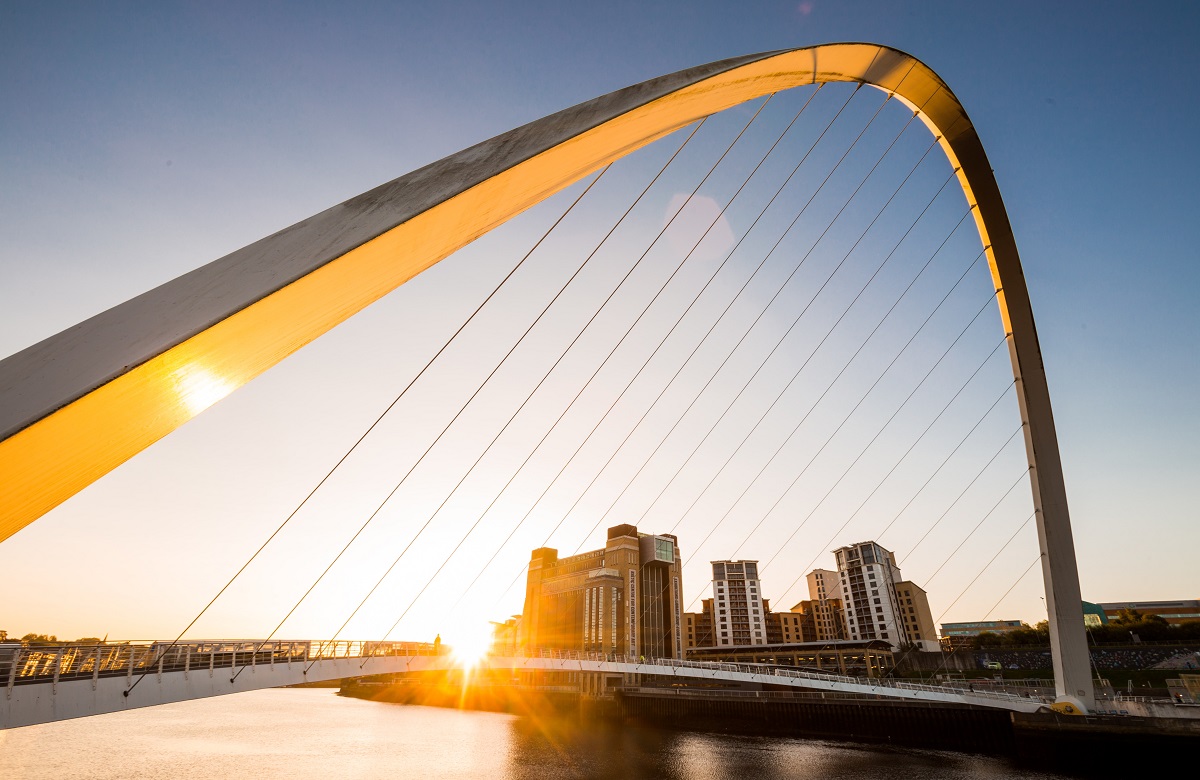
There are several bridges crossing the Tyne River in Newcastle, and this is a footbridge that spans an arch. It was opened in the year 2000 and has become a modern landmark of the city.
This is a monument erected in 1838 in honor of Charles Gray, the other Earl Gray, Earl Gray. The monument itself consists of a 41 meter/135 feet high pillar, with Charles Gray standing on top. Around the monument you can see fine examples of Georgian architecture.
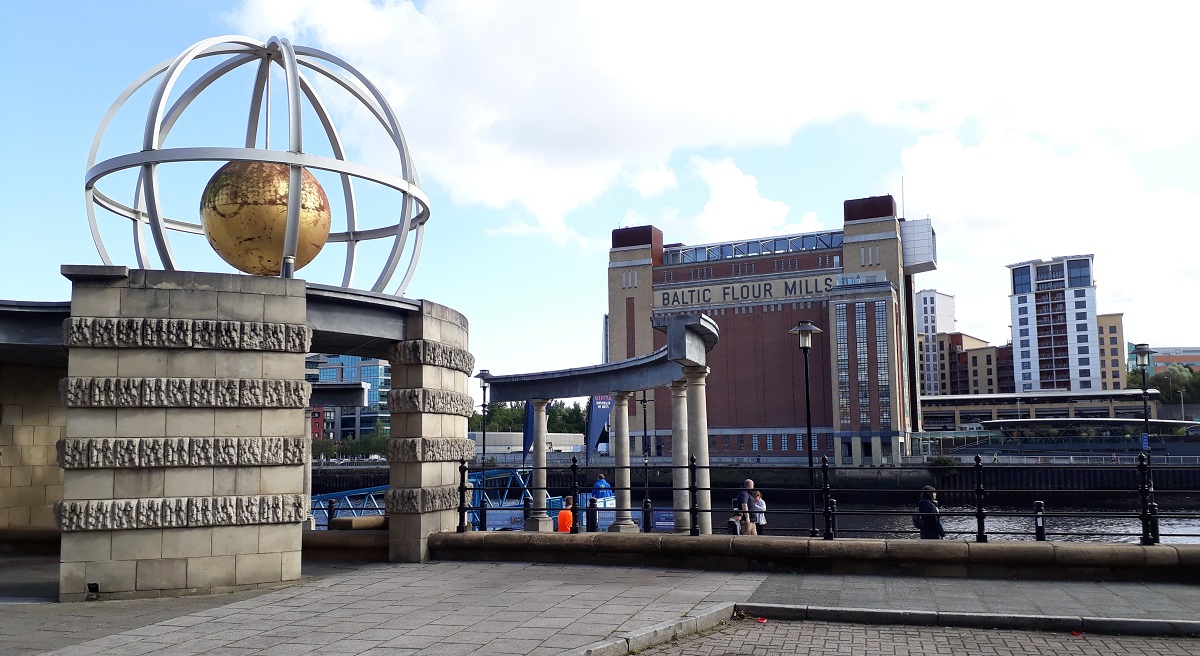
In the old industrial building, Baltic Flour Mill, this center for modern art has been located since 2002. On the many floors there is always a great variety of exhibitions and events to enjoy and explore.
This is Newcastle’s stately, royal theater, which was a part of Richard Grainger’s 1830s town plan. The theater opened in 1837, and the first production was The Merchant of Venice by William Shakespeare.
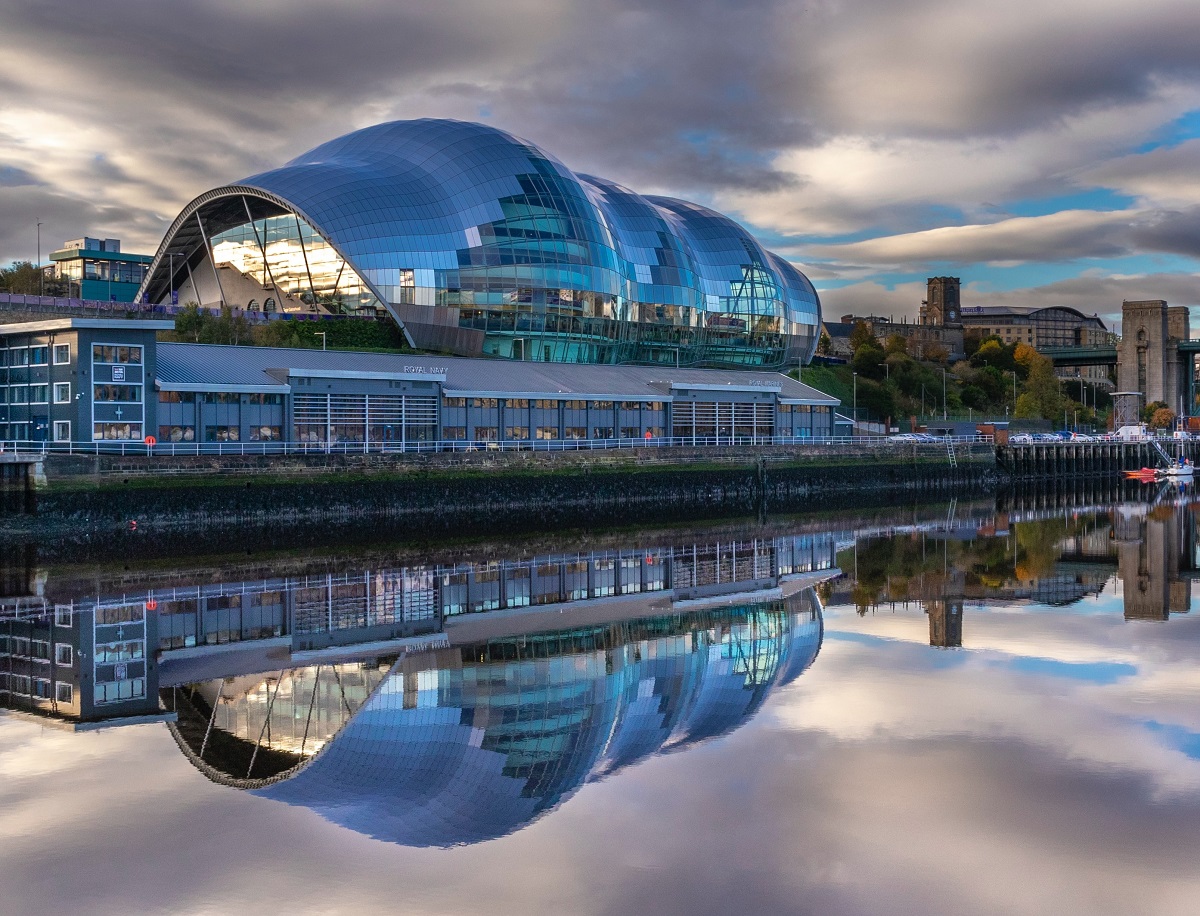
The Sage Gateshead lies on the south bank of the River Tyne as a steel and glass building. Round shapes as one of nature’s creations form the framework of this designwise interesting center of music.
Grainger Market is a series of market halls, built in the 1830s, where the city would gather the market activities on one location centrally in the city. The large market floot space makes it one of the country’s largest markets.
Blackfriars is a monastery founded by a rich merchant. It was run as a monastery until the Reformation in the 1530s, when all monasteries were dissolved under the reign of King Henry VIII.
Over time, Newcastle’s Chinese people have gathered their city life around the streets that today make up the city’s Chinatown. The is a traditional Chinese gate at the northern entrance to St. Andrew’s Street.
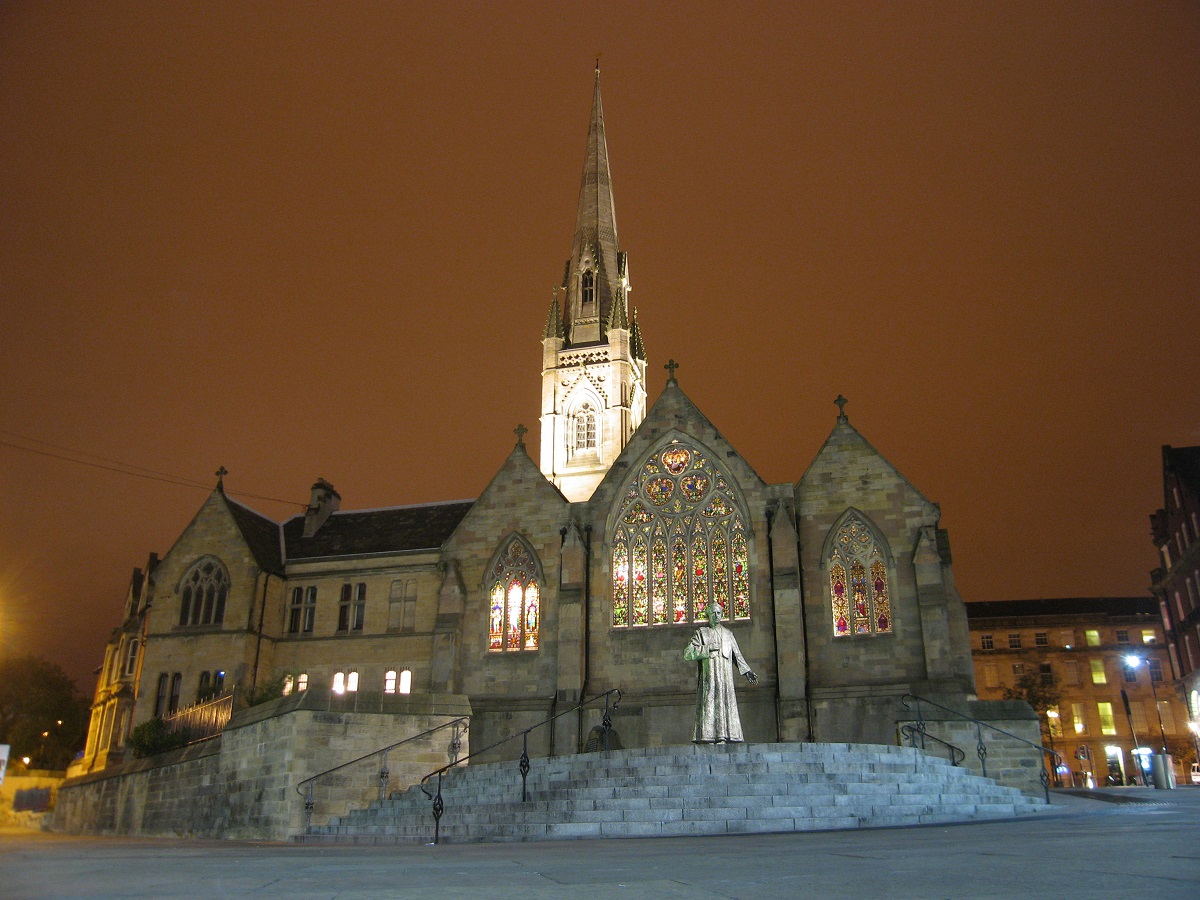
St. Mary’s is Newcastle’s Roman Catholic Cathedral. The church was built 1842-1844 by the architect Augustus Welby Pugin, who is known for several neo-Gothic buildings.
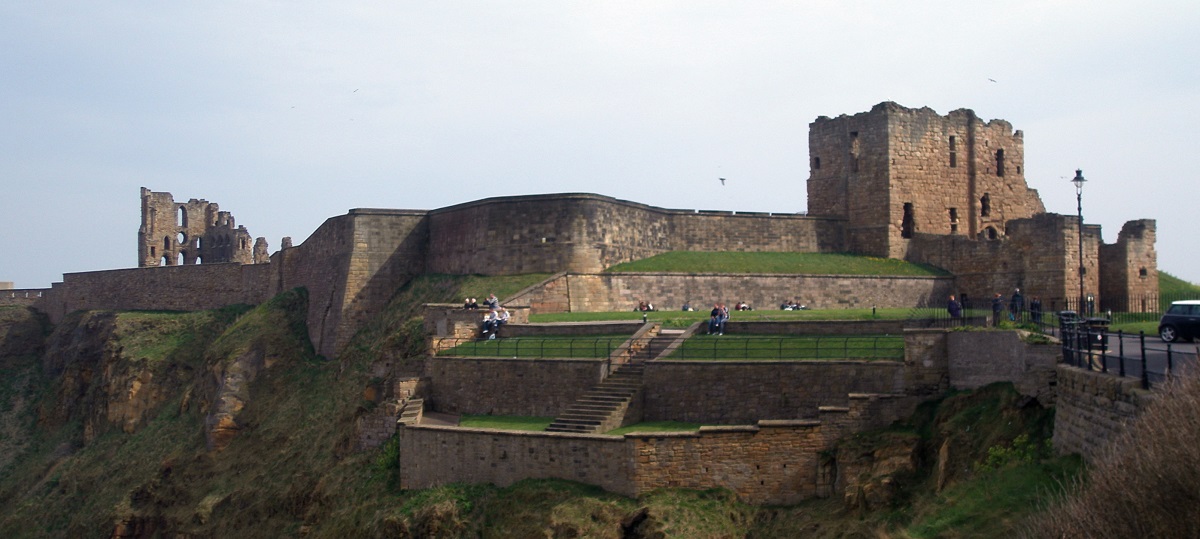
Near the town of Tynemouth, the river Tyne flows into the North Sea. The area is offering everything from lovely beaches and martime atmosphere to interesting buildings and good restaurants. See for example Tynemouth Castle and Priory, located on a rocky promontory in the North Sea.
The town of Sunderland with 180,000 inhabitants is located at the mouth of the Wear River towards the area’s beautiful coastline to the North Sea. Experience i.a. Sunderland Museum & Winter Gardens, St. Peter’s Church and Hylton Castle.
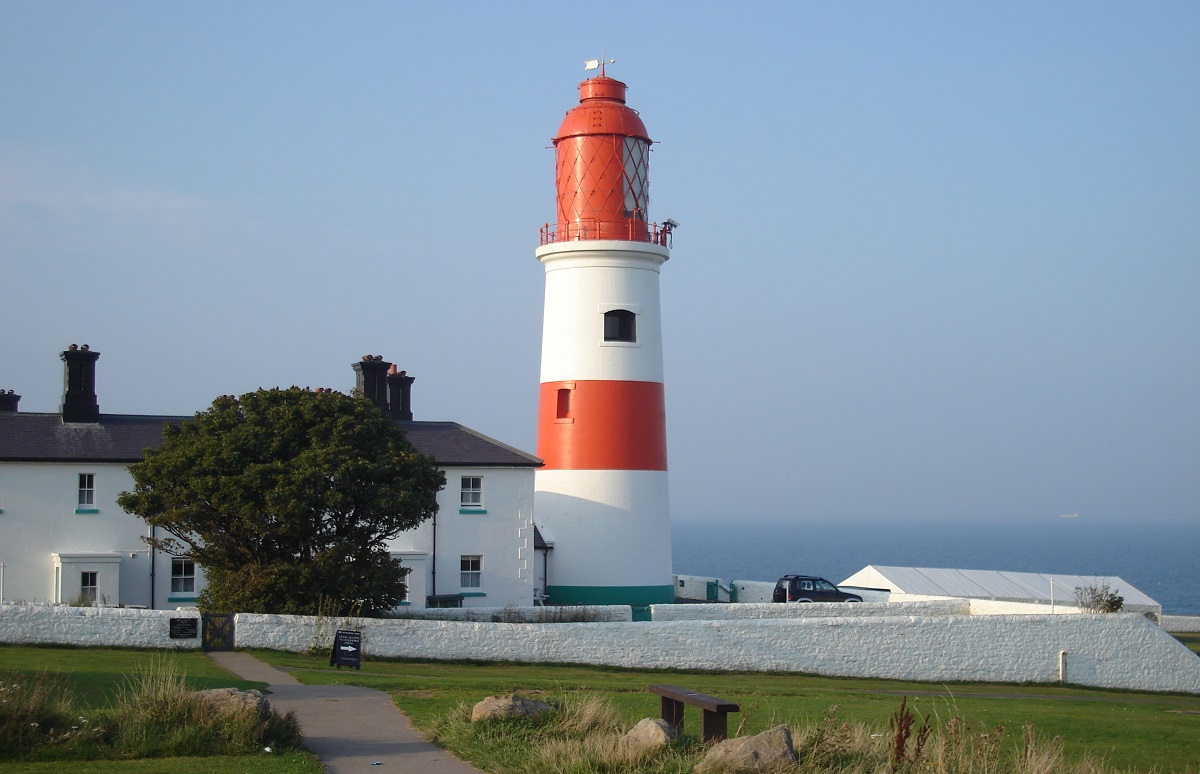
Souter Lighthouse is a lighthouse from 1871 that was the first in the world to have installed alternating current. It is built on this very place, where off the coast there are a number of rocky reefs, that have taken down many ships over time.
This is a modern sculpture created by Antony Gormley and built in 1994-1998. The angel measures 20 meters/65 feet in height and 54 meters/177 feet in width.
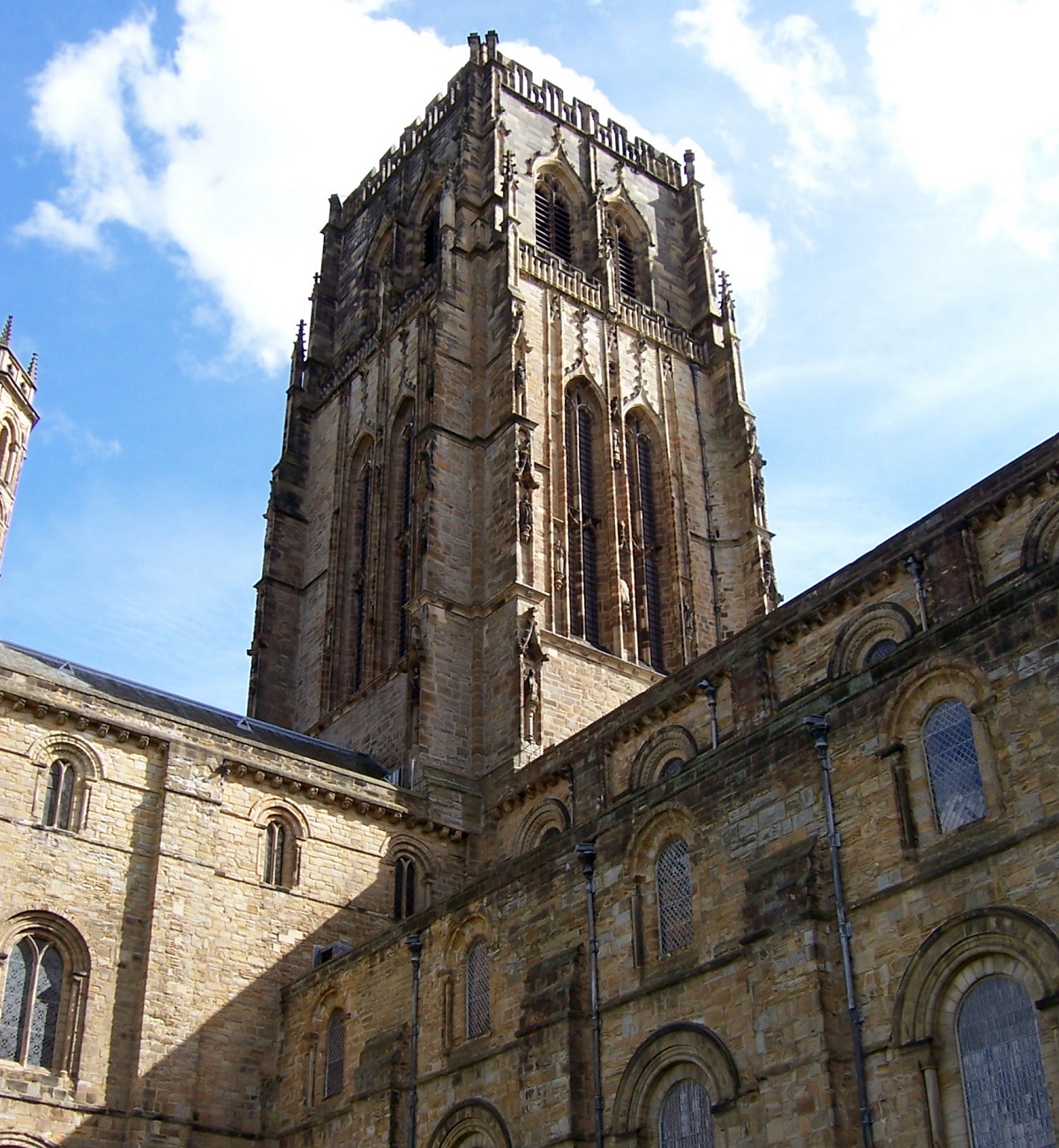
The town of Durham is beautifully situated on the River Wear, and just where it bends, the historic town center is located on a small peninsula. There are several sights in the city such as the great Durham Cathedral.
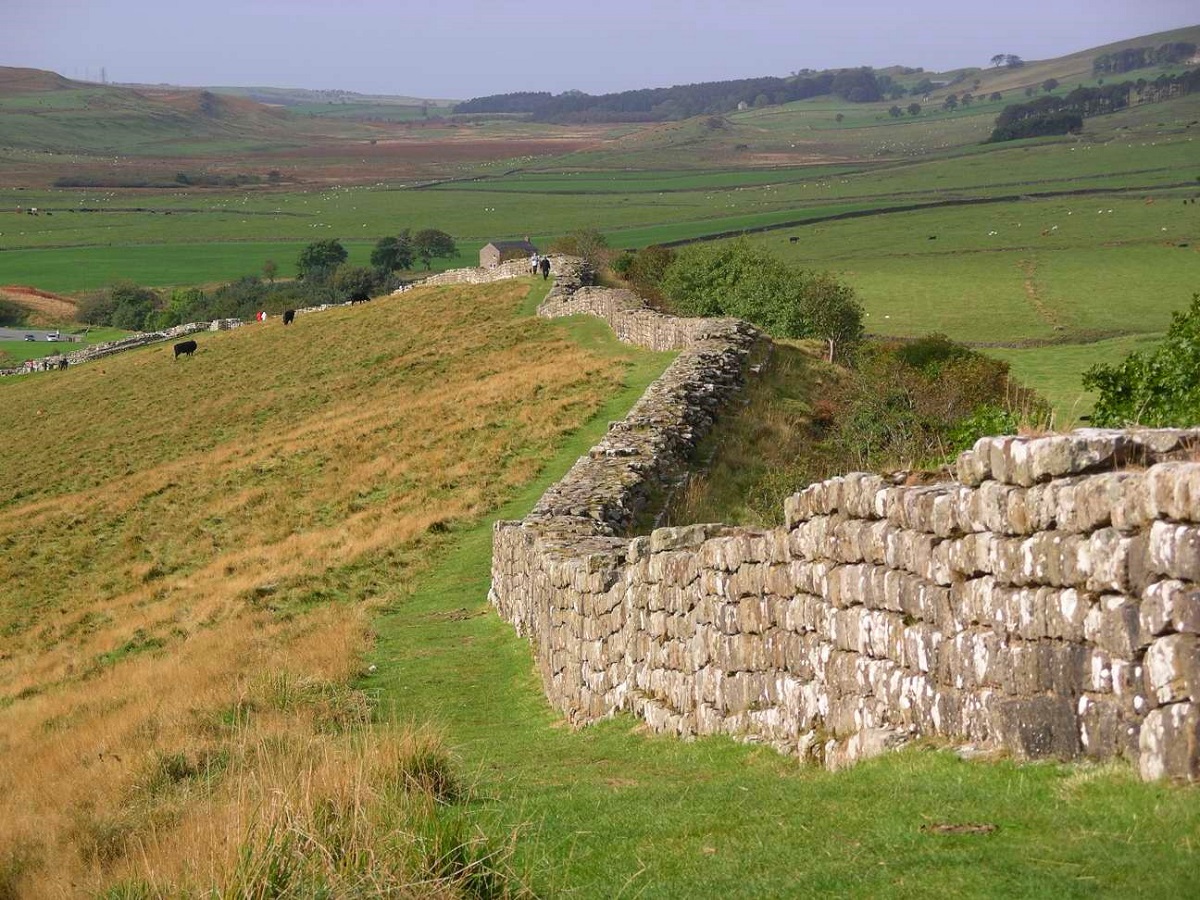
Hadrian’s Wall is an approximately 120 kilometer/75 mile long Roman construction that was to protect the northern border of the Roman Empire towards Scotland. The wall is named after Emperor Hadrian, who started construction in the year 122.
Dalton Park, Murton, Seaham
dalton-park.co.uk
Percy Street
eldon-garden.co.uk
Eldon Square
intu.co.uk/eldonsquare
Eldon Square
johnlewis.com
Gateshead
intu.co.uk/metrocentre
Coble Dene, North Shields
royalquaysoutletcentre.com
Coast Road, Wallsend
silverlinkshoppingpark.co.uk
Grey Street, Grainger Street, Northumberland Street, Stowell Street
Grainger Market
Life Science Centre
Times Square
life.org.uk
Great North Museum
Hancock, Barras Bridge
greatnorthmuseum.org.uk
Beamish Museum
Beamish
beamish.org.uk
Tynemouth Aquarium
Grand Parade, Tynemouth
tynemouthaquarium.co.uk
Discovery Museum
Blandford Square
discoverymuseum.org.uk
Newcastle United
St. James’ Park, Strawberry Place
nufc.co.uk
NELSAM
Old Washington Road, Sunderland
nelsam.org.uk
Stephenson Railway Museum
Middle Engine Lane, North Shields
stephensonrailwaymuseum.org.uk
Newcastle’s history begins with the Roman construction of the fort Pons Aelius in connection with the construction of Emperor Hadrian’s Wall from the year 122. The wall was to protect against the Scots in the north, and an actual settlement developed around some of the forts, including Pons Aelius, which had about 2,000 inhabitants.
After the Roman withdrawal from England, Pons Aelius and the Newcastle area became part of the Anglo-Saxon kingdom of Northumbria. The city became known during this time with the name Monkchester, but it did not have a very long life. Danish Vikings attacked the region many times, and there were local uprisings as well. Monkchester was destroyed and ended its history as a city.
In 1080, the English king, William the Conqueror, built a new castle on the site, hence the name Newcastle. Throughout the Middle Ages, Newcastle constituted the north-east defenses of England. In addition to the castle, city walls were also built, so it was a difficult to conquer city, which was also important due to the many border wars against Scotland. In 1174, the Scottish king, William I Lion, was taken prisoner in Newcastle, and through the 14th century, attacking Scots were defeated three times.
In the 16th century, Newcastle began to flourish greatly. The threat from Scotland was gradually gone, and in 1530 the town gained a monopoly in the area on the shipment of coal, which brought with it a great deal of trade. It was not least due to this monopoly that the rivalry between Newcastle and nearby Sunderland started.
During the English Civil War in the middle of the 17th century, Newcastle was on the king’s side, and the city was attacked by Parliament and its supporters, who had a number of Scots, who thereby returned to the city. The English king ended up being imprisoned by the Scots in Newcastle in the period 1646-1647, and the outcome of the war was in favor of the parliament.
During the 18th century, not least the printing presses and glassworks grew in size, and through the century they became among the largest in England and for glass in the whole world. However, it was still the coal trade that was the city’s most lucrative source of income.
In the 19th century, the Newcastle area became the industrial locomotive of the area. It was especially the shipbuilding industry and general heavy industry that created many jobs and thereby the city attracted lots of new inhabitants. Among the known products of the time are Robert Stephenson’s locomotive, Rocket, and Charles Parson’s invention of the steam turbine.
It was also in the 19th century that the city’s current center was conceived. It was primarily Richard Grainger and John Dobson who laid out and implemented the city plans with partial demolition of old buildings to make room for wider streets and larger magnificent buildings, as can be seen in Gray Street, among other places. The city was also located on the London-Edinburgh railway line, and bridges were therefore built across the Tyne River. They continue with their rustic iron constructions to be symbols of the industrial age through the late 1800s and early 1900s.
In the latter half of the 20th century, part of Richard Grainger’s Grainger Town district has been redeveloped. It has provided space for modern buildings, shopping malls and administration centers. In recent years, part of the development has been concentrated on the former port areas along Tyne River. Cultural offerings, beautiful promenades and buildings with even very exciting modern architecture have been developed, so now locals and tourists can on a short walk view both the city’s old and new monuments.
Overview of Newcastle
The northern English city of Newcastle is an exciting mix of new and old. The remains of the old castle that gave the city its name and the preserved parts of the medieval city wall are the most striking examples from history. Modern museums, well-stocked shopping malls and innovative architecture are also part of Newcastle.
Along the Tyne River there are several majestic bridges, and along the landscaped river promenade you can see some of these masterpieces from the industrial age, that added to Newcastle and northern England fame. In the same area, you can see some of England’s most spectacular buildings from recent decades.
Newcastle is close to the Scottish border, and from ancient times the impressive edifice, Hadrian’s Wall, winds its way through the countryside west of Newcastle towards the city of Carlisle. The North Sea with maritime activities at the mouth of the Tyne, churches, monasteries and beautiful nature are some of the many other things you can experience around Newcastle.
About the upcoming Newcastle travel guide
About the travel guide
The Newcastle travel guide gives you an overview of the sights and activities of the English city. Read about top sights and other sights, and get a tour guide with tour suggestions and detailed descriptions of all the city’s most important churches, monuments, mansions, museums, etc.
Newcastle is waiting for you, and at vamados.com you can also find cheap flights and great deals on hotels for your trip. You just select your travel dates and then you get flight and accommodation suggestions in and around the city.
Read more about Newcastle and England
Buy the travel guide
Click the “Add to Cart” button to purchase the travel guide. After that you will come to the payment, where you enter the purchase and payment information. Upon payment of the travel guide, you will immediately receive a receipt with a link to download your purchase. You can download the travel guide immediately or use the download link in the email later.
Use the travel guide
When you buy the travel guide to London you get the book online so you can have it on your phone, tablet or computer – and of course you can choose to print it. Use the maps and tour suggestions and you will have a good and content-rich journey.
Beautiful Bridges • The Old Castle • Fine Museums • St. James’ Park
Overview of Newcastle
The northern English city of Newcastle is an exciting mix of new and old. The remains of the old castle that gave the city its name and the preserved parts of the medieval city wall are the most striking examples from history. Modern museums, well-stocked shopping malls and innovative architecture are also part of Newcastle.
Along the Tyne River there are several majestic bridges, and along the landscaped river promenade you can see some of these masterpieces from the industrial age, that added to Newcastle and northern England fame. In the same area, you can see some of England’s most spectacular buildings from recent decades.
Newcastle is close to the Scottish border, and from ancient times the impressive edifice, Hadrian’s Wall, winds its way through the countryside west of Newcastle towards the city of Carlisle. The North Sea with maritime activities at the mouth of the Tyne, churches, monasteries and beautiful nature are some of the many other things you can experience around Newcastle.
About the upcoming Newcastle travel guide
About the travel guide
The Newcastle travel guide gives you an overview of the sights and activities of the English city. Read about top sights and other sights, and get a tour guide with tour suggestions and detailed descriptions of all the city’s most important churches, monuments, mansions, museums, etc.
Newcastle is waiting for you, and at vamados.com you can also find cheap flights and great deals on hotels for your trip. You just select your travel dates and then you get flight and accommodation suggestions in and around the city.
Read more about Newcastle and England
Buy the travel guide
Click the “Add to Cart” button to purchase the travel guide. After that you will come to the payment, where you enter the purchase and payment information. Upon payment of the travel guide, you will immediately receive a receipt with a link to download your purchase. You can download the travel guide immediately or use the download link in the email later.
Use the travel guide
When you buy the travel guide to London you get the book online so you can have it on your phone, tablet or computer – and of course you can choose to print it. Use the maps and tour suggestions and you will have a good and content-rich journey.

In the old industrial building, Baltic Flour Mill, this center for modern art has been located since 2002. On the many floors there is always a great variety of exhibitions and events to enjoy and explore.
This is Newcastle’s stately, royal theater, which was a part of Richard Grainger’s 1830s town plan. The theater opened in 1837, and the first production was The Merchant of Venice by William Shakespeare.

The Sage Gateshead lies on the south bank of the River Tyne as a steel and glass building. Round shapes as one of nature’s creations form the framework of this designwise interesting center of music.
Grainger Market is a series of market halls, built in the 1830s, where the city would gather the market activities on one location centrally in the city. The large market floot space makes it one of the country’s largest markets.
Blackfriars is a monastery founded by a rich merchant. It was run as a monastery until the Reformation in the 1530s, when all monasteries were dissolved under the reign of King Henry VIII.
Over time, Newcastle’s Chinese people have gathered their city life around the streets that today make up the city’s Chinatown. The is a traditional Chinese gate at the northern entrance to St. Andrew’s Street.

St. Mary’s is Newcastle’s Roman Catholic Cathedral. The church was built 1842-1844 by the architect Augustus Welby Pugin, who is known for several neo-Gothic buildings.
Similar to Newcastle Travel Guide
There are no listings matching your search.
Reset